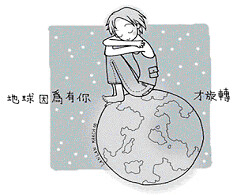Your 13 month old's social and emotional development: Me first!
New this month: Me first!
Do you feel as if your whole world still revolves around your baby? So does he! In fact, for much of his second year, your toddler will be self-absorbed. Sharing toys, snacks, and especially your attention may be very difficult. Watch him playing alongside another child, and you'll probably notice that he isn't very interested in actually interacting with her.
You're still the most important person in your 13-month-old's life, and he's likely to demand a lot of your attention. But you'll start to see glimpses of his growing independence and confidence. As long as he can keep an eye on you, he may entertain himself in the family room for several minutes while you prepare dinner, interrupt you for a quick reassuring cuddle, and then venture out on his own again.
At 13 months, children start to recognize that they have power, and they're learning how to use it. Your toddler may demand that you read to him, push him on a swing, take him for a walk. Even if he doesn't use words, he can make clear, by tugging on you and pointing, exactly what he wants.
What you can doWhether he's already a social butterfly or a little on the shy side, you can help your child develop social skills with these fun activities:
Hide and seek. Chasing you and hiding from you are probably among your 13-month-old's favorite activities. He'll be happy hiding behind a chair, a book, or even a dishtowel, and giggling endlessly as you pretend you can't find him.
Fetch. Your 13-month-old will adore this one, though you may find it less than entertaining. Throwing toys out of his crib or playpen or food off his highchair and watching you retrieve the objects and hand them back to him is big-time fun. He may also enjoy handing you toys, books, and other objects, expecting that you will hand them back. This kind of give, take, and give again is actually a social game, a way of keeping your attention. You may also notice that he loves an audience, and will repeat any "performance" that elicits a positive response, especially applause.
The "face-naming" game. Point to your eyes, nose, etc., and name them, and he'll soon get the hang of it. Ask him where your mouth is and soon enough he'll put his fingers right in it. Psychologists think this may be a precursor to the separation process (when your toddler figures out that you and he are separate people) that begins during the second year.
Other developments: Stranger anxiety and more fears
At around 13 months, many toddlers develop stranger anxiety. Yours may become upset when you leave him, even with friends or family members he sees often. A toddler who cries or whimpers, trembles, hides, or tries to run away from "strangers" is simply demonstrating that he can distinguish the difference between people he knows well — his parents and caregivers — and those he doesn't.
Even toddlers who are at ease with unfamiliar people will encounter situations that overwhelm them. A 13-month-old has a budding imagination, and things that never seemed to bother him before, such as the vacuum cleaner, bathtime, or a neighbor's pet, may suddenly be very scary.
What you can do
Remember that trust cannot be forced, so if your child is especially anxious around new faces, be patient and let him keep his distance until he's ready to interact. He'll look to you for guidance, so if you seem at ease around a new babysitter, for instance, he'll take that cue. It may help him become more comfortable around new people if you include him on excursions to the grocery store, or other places where he can watch how you behave around people you don't know.
Here are a few ways to soothe him when he's frightened of other things:
Loud noises. If the sound of the vacuum cleaner or lawn mower sends your child into a frenzy, let him touch the object (when it's not plugged in or turned on, of course). If sirens bother him, take a walk past your local firehouse so he can see the trucks and ambulances parked quietly. If he's curious about certain objects, let him explore them (if it's safe) and that will help calm his fears. Never force him into an encounter, though, since that will only feed his uneasiness.
The bathtub. Going down the drain, soap in the eyes, slipping — there's plenty for a toddler to fear at bathtime. If your toddler starts to resist getting into the tub, even if he used to enjoy the ritual, try giving him a sponge bath for a few days. Allow him to sit in the tub with no water, and use a washcloth rather than a cup of water to rinse his hair. You might even skip the shampoo for a few days until his anxiety eases. After a few days you can leave the water running and the drain open so the water doesn't accumulate too much, and then gradually ease up to a full-fledged bath again. If he fears the drain, demonstrate how his bath toys can't fit down the drain and so neither can he.
Animals. Even children who have pets at home are often frightened by other animals. Imagine how you'd feel if you came face-to-face with a 7-foot-tall bear; the neighbor's golden retriever seems just as menacing to your 13-month-old. Never force your child to pet an animal. Instead, do some role-playing with stuffed animals, or read books that feature animals like the ones he's afraid of. And it's very important to teach children to never pet any animal unless they ask the pet's owner first. Even the friendliest dog or cat can bite or scratch when provoked.
• See all our articles on toddler development.








<< Home